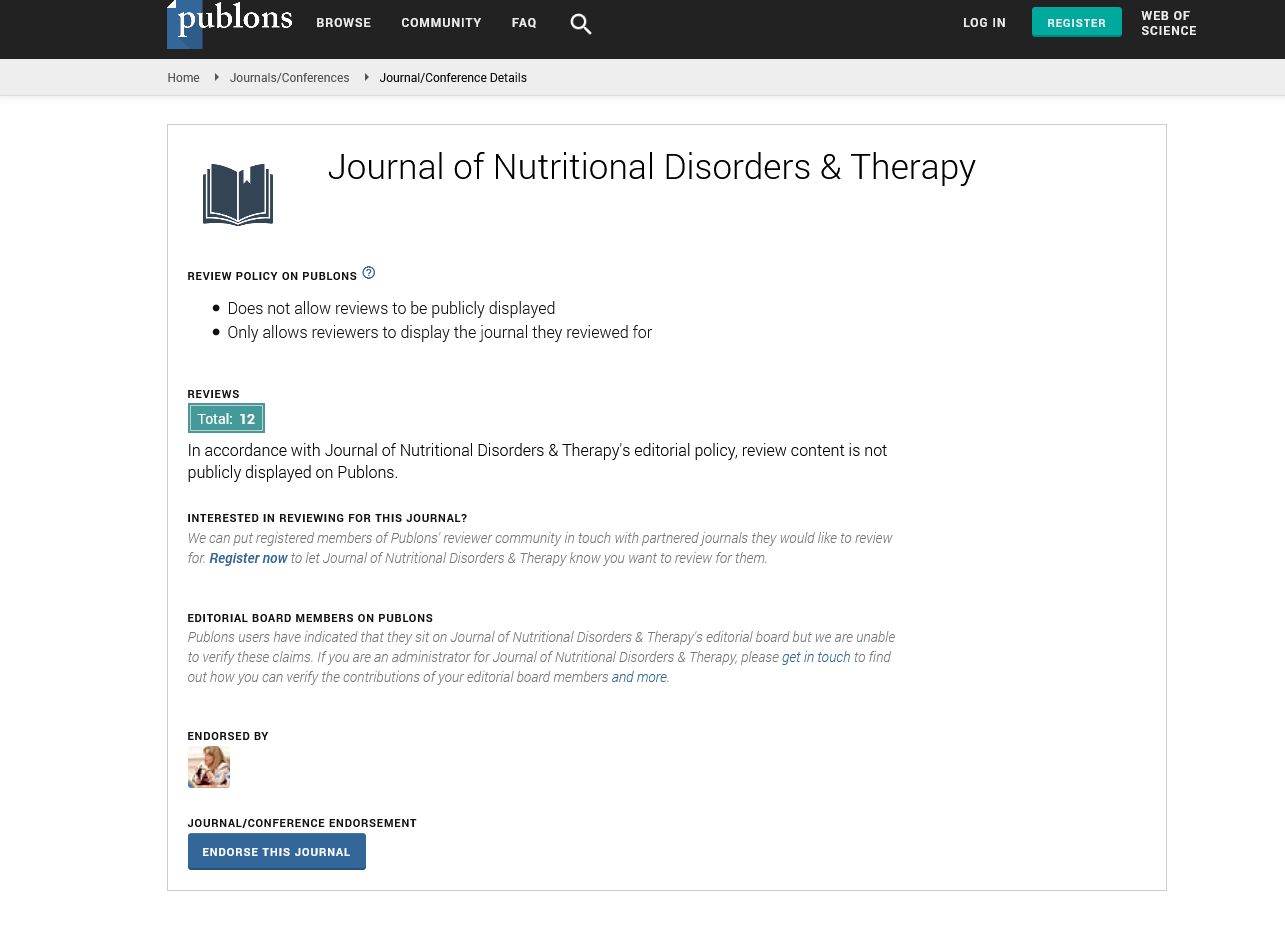Indexed In
- Open J Gate
- Genamics JournalSeek
- Academic Keys
- JournalTOCs
- Ulrich's Periodicals Directory
- RefSeek
- Hamdard University
- EBSCO A-Z
- OCLC- WorldCat
- Publons
- Geneva Foundation for Medical Education and Research
- Euro Pub
Useful Links
Share This Page
Journal Flyer

Open Access Journals
- Agri and Aquaculture
- Biochemistry
- Bioinformatics & Systems Biology
- Business & Management
- Chemistry
- Clinical Sciences
- Engineering
- Food & Nutrition
- General Science
- Genetics & Molecular Biology
- Immunology & Microbiology
- Medical Sciences
- Neuroscience & Psychology
- Nursing & Health Care
- Pharmaceutical Sciences
Association of dietary components with disordered eating and its complications in female tennis players and non-athletes
15th International Conference on Clinical Nutrition
May 24-26, 2018 | Vienna, Austria
Gabriela M O Coelho
Rio de Janeiro State University, Brazil
Posters & Accepted Abstracts: J Nutr Disorders Ther
Abstract:
Adolescents have a rapid growth and intense body changes that make them vulnerable in nutritional terms. The practice of dietary restrictions, quite common among adolescents, can lead to nutritional inadequacies that appear to be the first signal for the start of Disordered Eating (DE). The female sports participation and the number of DE cases in adolescent athletes from sports that require body‚??s exposure, agility and soft movements, like tennis, have increased in recent years. DE can lead to serious health complications such as menstrual irregularities (MI) and low Bone Mineral Density (BMD), constituting the Female Athlete Triad (FAT). Thus, it is believed that certain dietary components may be associated with DE and its complications. The aim of this study was to evaluate the association of dietary components with disordered eating, menstrual irregularities and body composition in female adolescent tennis players and controls. This was a crosssectional study. We carried out assessments of pubertal development by Tanner stage self-assessments; body composition by dual energy x-ray absorptiometry (DXA); dietary parameters by three-day food records; DE by the application of three validated questionnaires (Eating Attitudes Test - EAT-26, Bulimic Investigatory Test, Edinburgh- BITE and the Body Shape Questionnaire - BSQ), menstrual status through a validated questionnaire and BMD also by DXA. The Female athlete Triad (FAT) was established by the concomitant presence of DE and/or Low Energy Availability (LEA), MI and low BMD. Associations were performed using Spearman`s correlations between numerical variables of dietary components with DE and body composition. Also associations were performed using chi-square test, Fisher's exact test or binomial test for categorical variables of dietary components adequacy with DE and its complications. The study enrolled 75 adolescents (25 female tennis players, 50 controls) presenting with similar pubertal development. Athletes had better body composition profile, regarding the adipose tissue. As for the intake of macronutrients, carbohydrates are noteworthy. In both groups, most participants had low intake of carbohydrates, being this frequency of inadequacy significantly higher for athletes. Micronutrients with the greatest percentage of inadequacy were folic acid and calcium in both groups. It was found that 92%, 32% and 24% of the athletes and 72%, 8% and 30% of controls met the criteria for DE and / or LEA, MI, low bone mass, respectively. Although adolescent tennis players and controls present with similar prevalence of DA, the controls showed greater dissatisfaction with body image by BSQ test. However, the athletes seem to be in a more serious situation since they had a higher prevalence of LEA and MI. BMD and the prevalence of FAT were similar between groups. Significant inverse association was found between some dietary components (mainly energy and carbohydrates) and scores of BSQ test. It was concluded that low dietary intakes of some dietary components, mainly energy and carbohydrates, may function as markers for disordered eating in both groups in order to prevent further health consequences. gabimorgado@yahoo.com.b

